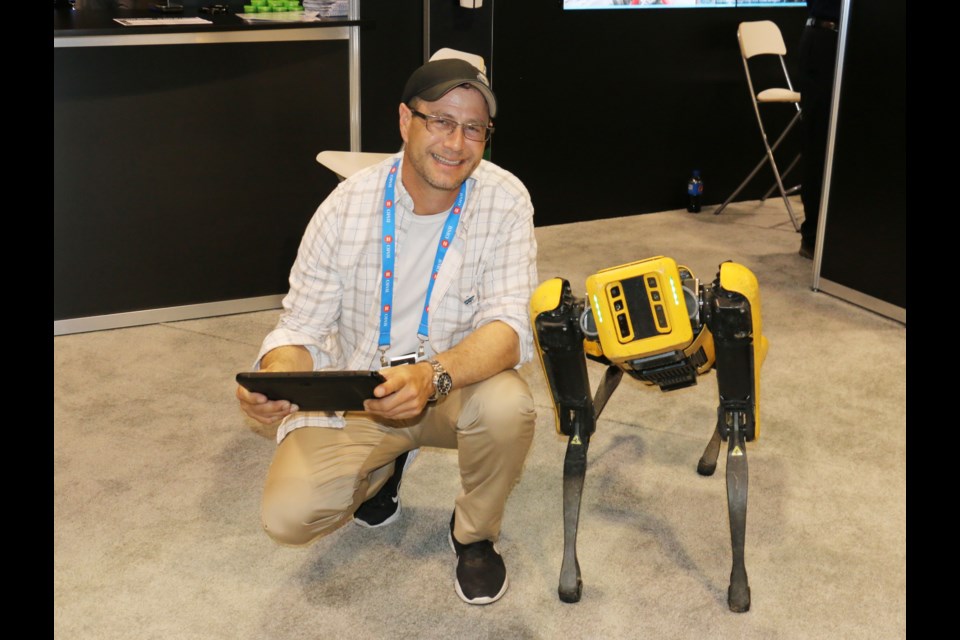Spot the Robotic Dog was a crowd-pleaser if not a complete show-stealer at the recent annual convention of the Prospectors and Developers Association of Canada (PDAC) that was recently held in Toronto.
People actually stopped their conversations and snapped their heads to follow the direction of the four-legged robotic yellow device moving swiftly through crowds at the Metro Toronto Convention Centre.
Sudburians might remember Spot as the robotic dog-like device, created by Boston Dynamics, that caused a mild video sensation when it was seen on Sudbury streets one night back in the fall of 2020.
Matt MacKinnon is the owner of Sudbury-based Unmanned Aerial Service Inc. which is working with Spot to come up with mining applications. MacKinnon said his business is primarily focused on flying drones for LIDAR mapping, surveying and inspections that can be done in underground mines and industrial confined spaces, among other places.
MacKinnon said there can be limits to where drones can go underground. He said if there is too much dust or water vapour or just not enough room to manoeuver, it can be difficult to operate a drone. That's where Spot can be called in.
In technical terms, Spot is a quadruped robotic device that can be remotely controlled to explore and traverse hazardous terrain in underground mines.
"Yeah, so actually, we're really fortunate being based in Sudbury, because we're a mining centre," MacKinnon said. Spot was put through some tough try-outs in Northern Ontario mine settings. One of them was at Glencore Kidd Mine in Timmins, the deepest base metal mine in the world.
It became apparent that Spot could carry out inspections in hazardous areas — such as recently blasted longhole stopes — where it would be too dangerous for a person to inspect the blast.
MacKinnon said another possible application would be to assist a mine rescue operation to find a missing or injured miner, or just to find the precise location of a fire or a cave-in.
"I mean, with mine rescue — that's what they're truly interested in — you have the 'grappler' option that you can put on it. So it has a hand on the front. So you could in theory, potentially hook on to somebody and at least get a rope through if you can't drag them out, OK. Or you can get a bottle of water or a radio or cap lamp out into that area. And then you have all the different sensors you can throw on," MacKinnon said.
He added that Spot can also be sent into areas that might have remnants of blasting gas or other poisonous substances.
"And you have all the different sensors you can throw on. So they go back to the gas sensing, you can tell what's going on and use the dog as a forward observer transferring that information back to the server," MacKinnon explained.
He said his company doesn't actually sell the robots. Boston Dynamics still does that. MacKinnon said his company provides unique mining-inspection applications and training for companies that would purchase their own version of Spot.
Even though MacKinnon is a "tech guy" in a high-tech business, he said he is still amazed by robotic technology and seeing what Spot can do.
"There's a lot of things, actually, like how well it can navigate through adverse conditions,” he said.
“So just being able to work in a regular underground environment. You're not prepping anything; you're not getting anything ready. You're just showing up and you're being able to let this thing work. Yeah, it blew me away. The other big thing was its ability to be able to navigate in like, true complete pitch darkness."
Len Gillis covers mining and health care for Sudbury.com.



